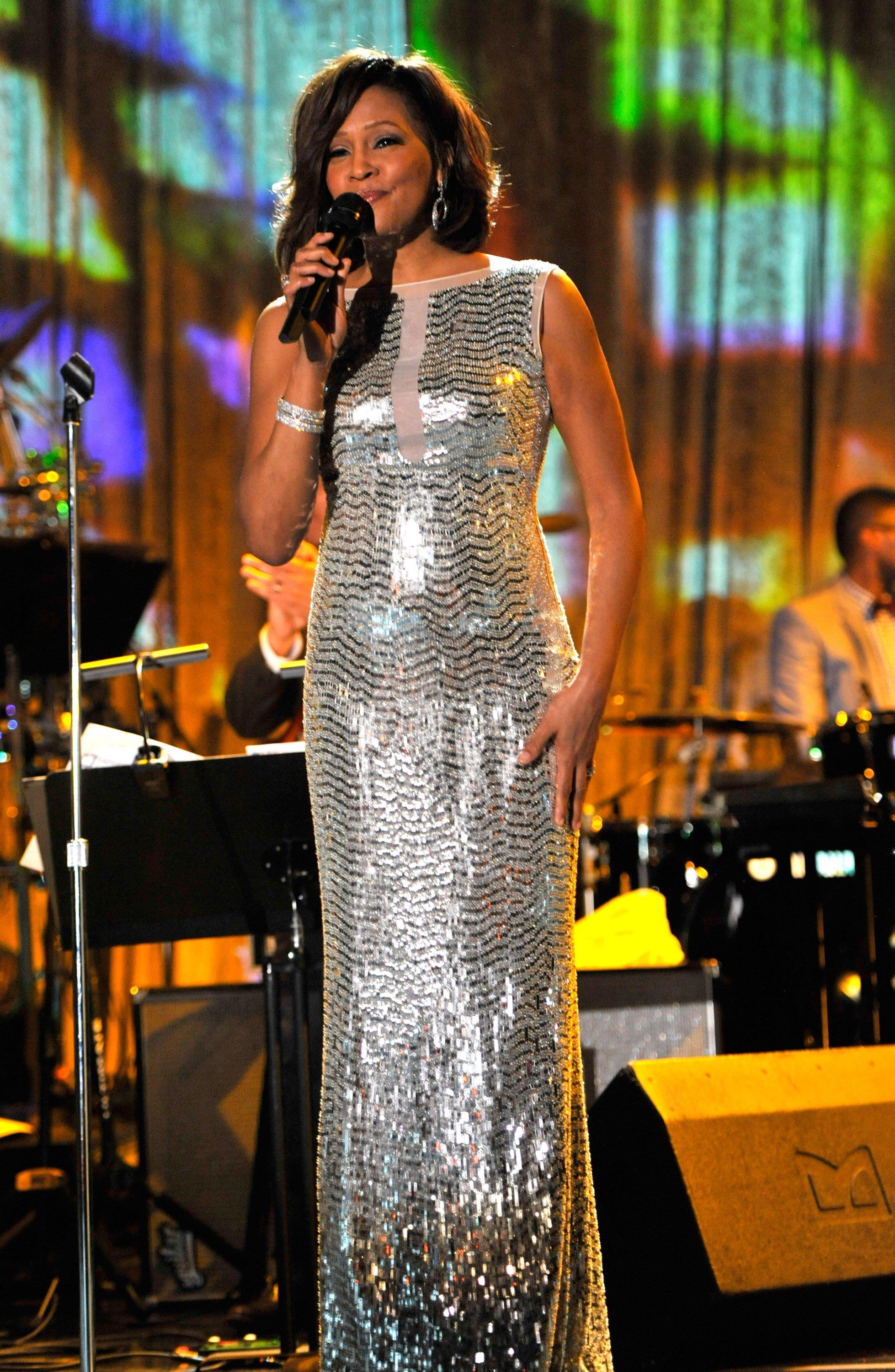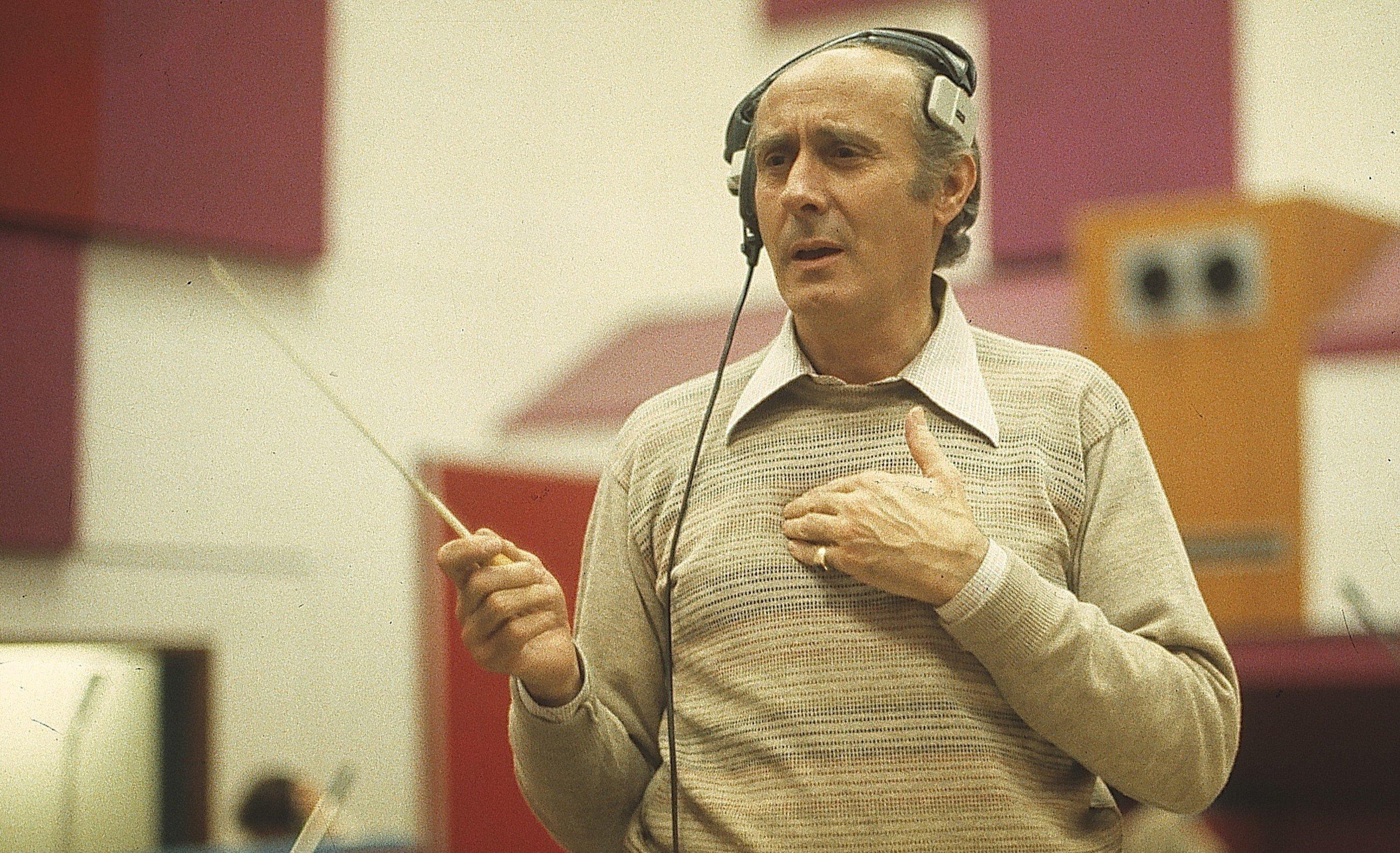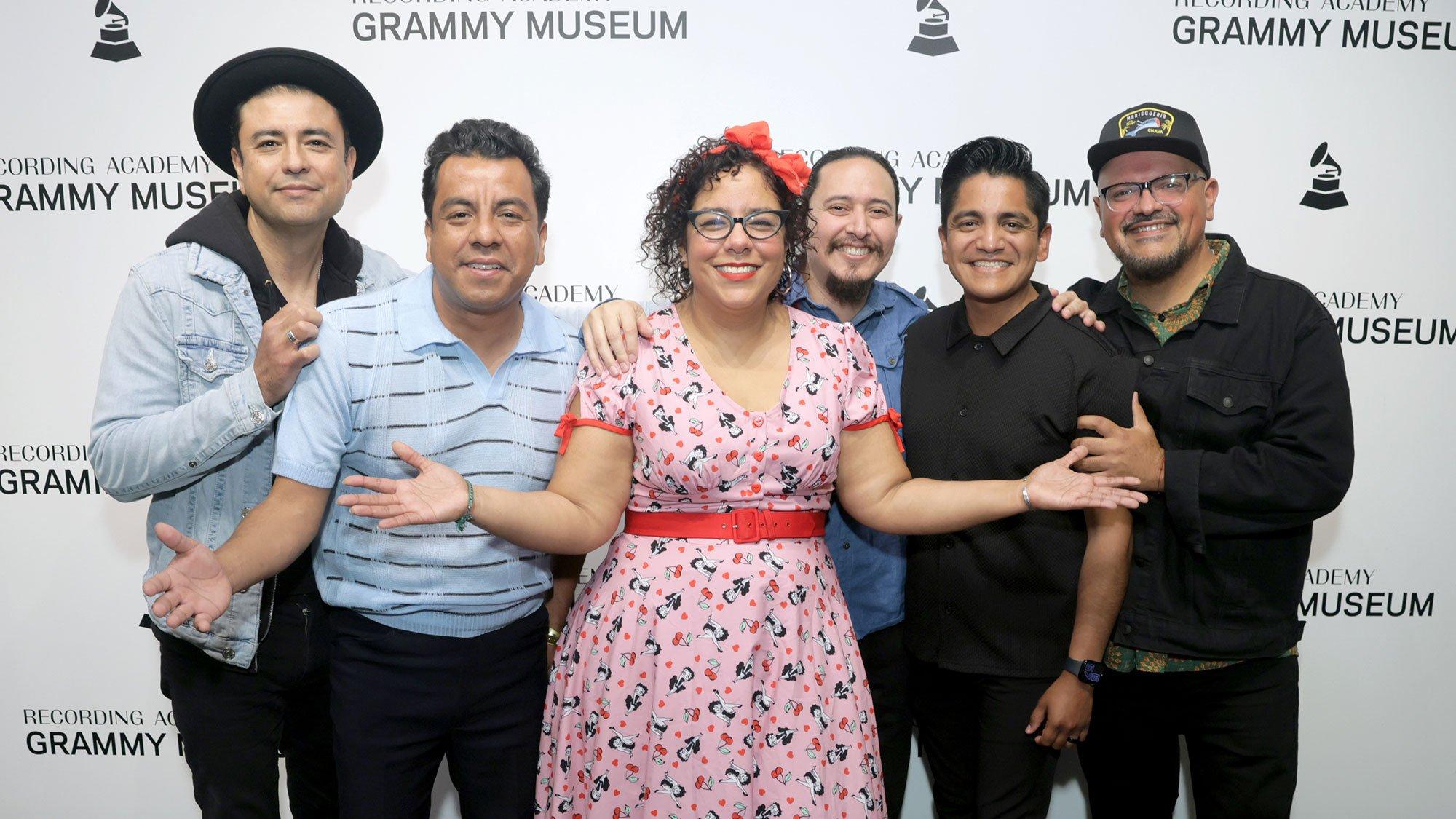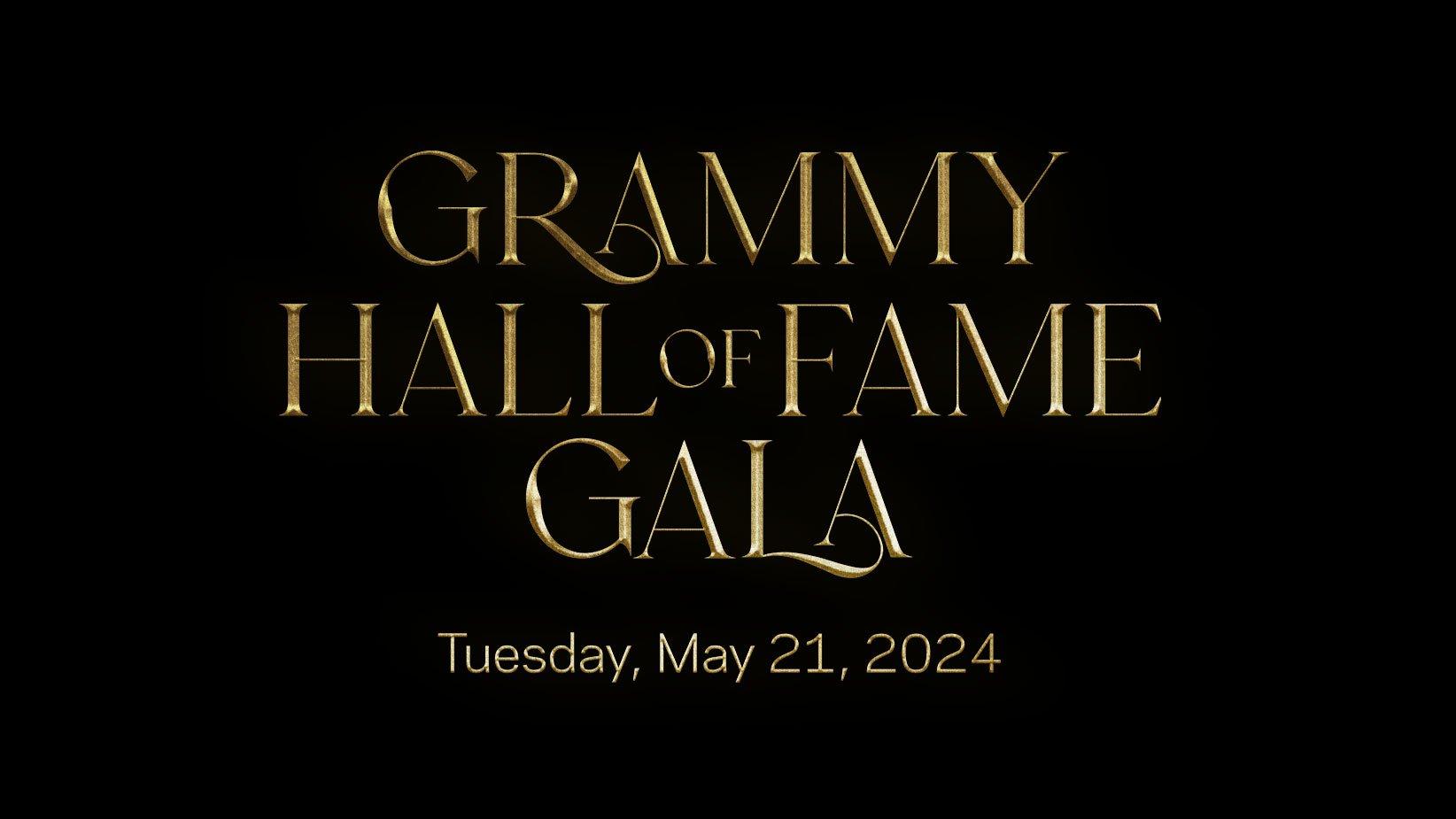Photo: Kevin Mazur/WireImage.com

news
GRAMMY Museum To Launch Whitney Houston Exhibit
Whitney! Celebrating The Musical Legacy Of Whitney Houston will explore the extraordinary life and career of the six-time GRAMMY winner
On Aug. 15 the GRAMMY Museum, in conjunction with the family of Whitney Houston, will launch Whitney! Celebrating The Musical Legacy Of Whitney Houston, the first major museum exhibition exploring the extraordinary life and career of the six-time GRAMMY winner. The exhibition will debut the same week as the premiere of Sparkle, Houston's last film before her passing in February.
Whitney! will provide an in-depth look at all aspects of Houston's creative life. Bringing together a collection of diverse artifacts, rare photographs and footage, the exhibit will feature dozens of items from the private collection of the Houston family, including stage costumes worn by Houston, such as her gown worn at the 36th Annual GRAMMY Awards; albums and career scrapbooks from Houston's early career; and ticket stubs, concert posters, tour books, and fan memorabilia.
Additionally, the GRAMMY Museum has interviewed artists and musicians who have worked with or have been influenced by Houston, sharing their perspectives on her gift of performance that astounded and touched fans all over the world.
Whitney! will be on display in the GRAMMY Museum's special exhibits gallery through February 2013.

Photo: A. Schorr/ullstein bild via Getty Images
list
10 Essential Henry Mancini Recordings: From "Moon River" To The 'Pink Panther' Theme
Composer, arranger, conductor and pianist Henry Mancini won 20 GRAMMY Awards over his legendary career. On what would be his 100th birthday, revisit 10 timeless Henry Mancini compositions.
Henry Mancini had a gift for melodies of an ethereal, almost supernatural beauty.
His prolific discography — albums of jazzy orchestral pop, dozens of film and television soundtracks — established him as a cultural icon and transformed the role that melody and song played in the art of movie narrative. Once you encounter a Henry Mancini tune, it’s almost impossible not to start humming it.
A composer, arranger, conductor and pianist of tireless discipline, Mancini won a staggering 20 GRAMMY Awards and was nominated 72 times. All of his wins — including the first-ever golden gramophone for Album Of The Year at the inaugural 1959 GRAMMYs — will be on display at the GRAMMY Museum to honor his centennial birthday, April 16.
To mark what would be his centennial birthday, Mancini's children will travel to Abruzzo, Italy — where Mancini’s parents migrated from. And on June 23, the Hollywood Bowl Orchestra will present a program of his music with a gallery of guest stars including singer Monica Mancini, the maestro’s daughter. Out June 21, The Henry Mancini 100th Sessions – Henry Has Company will feature a new recording of "Peter Gunn" conducted by Quincy Jones and featuring John Williams, Herbie Hancock and Arturo Sandoval.
Although Mancini died in 1994 at age 70, his compositions remain timeless and ever-relevant. Read on for 10 essential Henry Mancini compositions to cherish and rediscover.
"Peter Gunn" (1958)
In 1958, Mancini was looking for work and used his old Universal studio pass to enter the lot and visit the barber shop. It was outside the store that he met writer/director Blake Edwards and got the chance to write the music for a new television show about private detective Peter Gunn.
Seeped in West Coast Jazz, Mancini’s main theme sounds brash and exciting to this day – its propulsive beat and wailing brass section evoking an aura of cool suspense. The "Peter Gunn" assignment cemented his reputation as a cutting-edge composer, and the accompanying album (The Music From Peter Gunn) won GRAMMYs in the Album Of The Year and Best Arrangement categories.
"Mr. Lucky" (1959)
Half of the "Peter Gunn" fan mail was addressed to Mancini. As a result, CBS offered Blake Edwards a second television show, as long as the composer was part of the package. Edwards created "Mr. Lucky," a stylish series about the owner of a floating casino off the California coast.
1959 was an exhausting year for Mancini, as he was scoring two shows at the same time on a weekly basis. Still, his music flowed with elegance and ease. The "Mr. Lucky" ambiance allowed him to explore Latin rhythms, and the strings on his wonderful main theme shimmer with a hint of yearning. It won GRAMMY Awards in 1960 for Best Arrangement and Best Performance by an Orchestra.
"Lujon" (1961)
As part of his contract with RCA Victor, Mancini was committed to recording a number of albums featuring original compositions in the same velvety jazz-pop idiom from his television work. "Lujon" is the standout track from Mr. Lucky Goes Latin, a collection of Latin-themed miniatures that luxuriate in a mood of plush languor.
Inspired by the complex harmonics of French composer Maurice Ravel, "Lujon" steers safely away from lounge exotica thanks to the refined qualities of the melody and arrangement.
"Moon River" (1961)
Performed on a harmonica, the main melody of "Moon River" is nostalgic to the bone, but also life affirming. A majestic string section makes the music swoon, like gliding on air. And the harmonies in the vocal chorus add gravitas — a touch of humanity.
It took Mancini half an hour to write "Moon River," but the Breakfast at Tiffany’s anthem made him a global superstar. Among the many artists who covered the song, pop crooner Andy Williams turned it into his personal anthem. Mancini won an Academy Award for Best Original Song, and GRAMMY Awards for Record Of The Year, Song Record Of The Year and Best Arrangement. The album soundtrack earned two additional gramophones.
Theme from Hatari! (1962)
After two failed attempts with different composers, legendary director Howard Hawks invited Mancini to write the score for Hatari! — the wildly episodic but oddly endearing safari film he had shot in Tanganyika with John Wayne. Mancini jumped at the opportunity, and Hawks gave him a few boxes from the trip that contained African percussive instruments, a thumb piano and a tape of Masai tribal chants. Two chords from that chant, together with a slightly detuned upright piano formed the basis for the movie’s main theme.
Mancini’s sparse arrangement and melancholy melody conspired to create one of the most gorgeous themes in the history of film.
"Days of Wine and Roses" (1962)
Throughout the decades, Mancini provided musical accompaniment to Blake Edwards’ filmography, which switched from slapstick comedy to stark melodrama. There is a perverse beauty to the theme of Days of Wine and Roses — a movie about a couple of lifelong alcoholics — as the lush choral arrangement seems to glorify the innocence of better times.
It won an Academy Award for Best Original Song — Mancini’s second Oscar in a row — and three GRAMMYs: Record Of The Year, Song Of The Year and Best Background Arrangement.
"The Pink Panther Theme" (1963)
Directed by Edwards and starring Peter Sellers as part of an ensemble cast, the original Pink Panther was a frothy caper comedy that had none of the manic touches of comedic genius that Sellers would exhibit in subsequent entries of the franchise. It was Mancini’s ineffable main theme that carried the movie through.
Jazzy and mischievous, Mancini wrote the melody with the light-as-a-feather playing of tenor saxophonist Plas Johnson in mind. It won GRAMMYs in three categories: Best Instrumental Arrangement, Best Instrumental Compositions (Other Than Jazz), and Best Instrumental Performance – Non-Jazz.
Charade (1963)
Mancini’s gift for cosmopolitan tunes and jazzy arrangements found the perfect vehicle in the score for Stanley Donen’s Charade — a droll Hitchcockian thriller shot in Paris and starring Cary Grant and Audrey Hepburn.
The main theme is a waltz in A minor, and opens with pulsating percussion. When the central melody appears, it evokes a melancholy reflection and a certain thirst for the kind of globetrotting adventure that the film delivers in spades. It was Johnny Mercer’s favorite Mancini melody, and he wrote exquisite lyrics for it.
The best version probably belongs to jazz singer Johnny Hartman, who released it as the opening track of his 1964 album I Just Dropped By To Say Hello.
Two For The Road (1967)
Friends and family remember Mancini as a humble craftsman who ignored the trappings of fame and focused on the discipline of work. In 1967, after Audrey Hepburn cabled to ask him about writing the music for the Stanley Donen film Two For The Road, Mancini agreed, but was taken aback when the director rejected his initial theme. Leaving his ego aside, he returned to the drawing board and delivered a lovely new melody – and a spiraling piano pattern seeped in old fashioned tenderness.
"Theme from The Molly Maguires" (1970)
Even though Mancini enjoyed most accolades during the ‘60s, his protean level of inspiration never wavered. In 1970, he was brought in to rescue the soundtrack of Martin Ritt’s gritty secret societies drama The Molly Maguires, about Irish-American miners rebelling against their mistreatment in 19th century Pennsylvania.
The main theme makes time stand still: a sparse arrangement that begins with a solitary harp, until a recorder ushers in a haunting, Irish-inspired melody. The score reflected a more restrained Mancini, but was still intensely emotional.

Photo: Rebecca Sapp/Getty Images for The Recording Academy
news
La Santa Cecilia Celebrates Their 'Alma Bohemia' With Documentary Screening & Performance At The GRAMMY Museum
In a documentary screening detailing the making of their album 'Cuatro Copas' followed by a discussion and live performance at the GRAMMY Museum, La Santa Cecilia recounts years of making music and friendship.
"Oh no, I’m going to start crying again," says La Santa Cecilia singer La Marisoul during a touching scene in Alma Bohemia, the documentary directed by Carlos Pérez honoring the Los Angeles band’s 15 year anniversary.
As it turns out, there are many reasons to be emotional about this film — and the very existence of La Santa Cecilia in the contemporary Latin music landscape. Fittingly, Alma Bohemia was received enthusiastically by the capacity audience during an exclusive screening on April 3 at the GRAMMY Museum’s Clive Davis Theater in Los Angeles.
Formed by La Marisoul (real name is Marisol Hernández), bassist Alex Bendaña, accordionist and requinto player José "Pepe" Carlos and percussionist Miguel "Oso" Ramírez, La Santa Cecilia was for years one of the best kept secrets in the Los Angeles music scene. As close friends and musicians, they won over audiences with an organic, down-to-earth sound and a lovely songbook that draws from traditional formats such as bolero, ranchera and nueva canción.
Alma Bohemia follows the making of La Santa’s 2023 album, Cuatro Copas Bohemia en la Finca Altozano. A celebration of the band’s longevity, the session also functions as a subtle, yet powerful musical experiment. It was recorded at the Finca Altozano in Baja California, where the band members stayed as guests of celebrated chef Javier Plascencia — a longtime fan.
Argentine producer Sebastián Krys — the band’s longtime collaborator — calls this his Alan Lomax experiment. The album was recorded live on tape with a variety of strategically placed microphones capturing hints of ambient sonics — a sweet afternoon breeze, the clinking of glasses, the musicians’ banter, the soft sounds that accompany stillness.
From the very beginning, the making of Cuatro Copas mirrors the band’s bohemian cosmovision: A communal approach where the quartet — together with carefully selected guest stars — get together to share the magic of creation, the unity of like-minded souls, homemade food, and more than a couple of drinks. In effect, the bottles of mezcal and never ending rounds of toasting quickly become a running joke throughout the documentary.
La Marisoul’s fragile lament is enveloped in spiraling lines of mournful electric guitars with soulful understatement on the track "Almohada." Guest artists liven things up, with Oaxacan sister duo Dueto Dos Rosas adding urgency to "Pescadores de Ensenada," while son jarocho master Patricio Hidalgo ventures into a lilting (yet hopeful) "Yo Vengo A Ofrecer Mi Corazón," the ‘90s Argentine rock anthem by Fito Páez.
Visibly delighted to be part of the bohemia, 60-year-old ranchera diva Aida Cuevas steals the show with her rousing rendition of "Cuatro Copas," the José Alfredo Jiménez classic. "Viva México!" she exclaims as the entire group sits around a bonfire at night, forging the past and future of Mexican American music into one.
Read more: La Santa Cecilia Perform "Someday, Someday New"
Following the screening, the band sat down for a Q&A session hosted by journalist Betto Arcos. Sitting on the first row, a visibly moved young woman from El Salvador thanked the band for helping her to cope with the complex web of feelings entailed in migrating from Latin America. La Santa’s songs, she said, reminded her of the loving abuelita who stayed behind.
"We love the old boleros and rancheras," said La Marisoul. "We became musicians by playing many of those songs in small clubs and quinceañeras. It’s a repertoire that we love, and I don’t think that will ever change."
Carlos touched on his experience being a member of Santa Cecilia for about seven years before he was able to secure legal status in the U.S. When the band started to get concert bookings in Texas, they would take long detours on their drives to avoid the possibility of being stopped by the authorities. Carlos thanked his wife Ana for the emotional support she provided during those difficult years.
Ramírez took the opportunity to acknowledge producer Krys for being an early champion of the band. "He had a vision, and he made us better," he said, flashing forward to a recent edition of the Vive Latino festival. "There were about 12,000 people to see us," he said. "And they were singing along to our tunes."
"The band is just an excuse to hang out with your friends," added La Marisoul just before La Santa performed two live songs. Her voice sounded luminous and defiant in the theater’s intimate space, always the protagonist in the group’s delicately layered arrangements.
"The first time I got to see the finished documentary, I felt proud of all the work we’ve done together," said producer Krys from his Los Angeles studio the day after the screening. "On the other hand, there’s a lot of work ahead of us. I believe La Santa Cecilia deserves wider exposure. They should be up there among the greatest artists in Latin music."

Photo: Ethan Miller/Getty Images
list
Enrique Iglesias Forever: 10 Songs That Prove He's A Latin Pop Hero
Ahead of what might be his final album — 'Final (Vol. 2),' out March 29 — celebrate Enrique Iglesias' legacy of groundbreaking Latin pop with 10 tracks of heartbreak, sensuality and dancefloor bangers.
Latin music has gone global and Enrique Iglesias is one of the superstars who laid the foundation for that crossover. The Spanish pop icon's music career spans four decades of hits both in his native tongue and in English. Following his reign as Billboard’s Greatest Latin Artist of All-Time, Iglesias marks the end of an era with the last album of his career, Final Vol. 2.
Iglesias followed in the footsteps of his father, singer/songwriter Julio Iglesias, and made his own debut in the 1990s with Spanish-language love songs. He began singing in English at the end of the decade, and subsequently led an explosion of interest in Latin pop alongside acts like Ricky Martin, Jennifer Lopez, and later Shakira.
As of writing, Iglesias has a record-breaking 27 No. 1 singles on Billboard's Hot Latin Songs chart, and solidified himself as a global heartthrob with an allure that defies language barriers. For his efforts, Iglesias has won one GRAMMY and five Latin GRAMMY Awards.
Enrique Iglesias will release what will likely be his final album on March 29, aptly titled Final (Vol. 2). Ahead of his final bow, here are 10 tracks that celebrate Iglesias' legacy in Latin music.
"Experiencia Religiosa" (1995)
Iglesias made his debut in 1995 with a self-titled first album. Among the ballads on the10-track LP, the otherworldly "Experiencia Religiosa" best demonstrates the power of his charm.
Backed by the piano with elements of gospel music, Iglesias belts his heart out about a night of passion that felt like spiritual awakening. To capture the energy of the sparks flying, an electric guitar solo rounded out his soulful yet sexy sermon. Iglesias demonstrated his knack for seamlessly blending together romance and sex appeal, which would go on to define his artistry and style.
Enrique Iglesias earned the singer his first golden gramophone at the 39th GRAMMY Awards for Best Latin Pop Performance.
"Nunca Te Olvidaré" (1997)
Iglesias proved that he was here to stay with his third album, 1997's Cosas Del Amor. The LP includes one of his signature love songs, "Nunca Te Olvidaré."
Iglesias' voice reached angelic highs in the Spanish-language power ballad, which details romance that left a lasting impression. No matter what happened, the love Iglesias shared with that person couldn't be forgotten — much like his impact on the Latin pop explosion that was brewing.
"Bailamos" (1999)
Proving he was so much bigger than the Iglesias last name, he crossed over into the English-language market with his 1999 album Enrique. Iglesias became a global Latin pop heartthrob with the sultry club banger "Bailamos." The song was featured on the Wild Wild West soundtrack, after Will Smith personally invited Iglesias to contribute music to the project.
Backed by the strum of the Spanish guitar with alluring synths, he invited the world to dance with him in English and Spanish. In a major moment for Latin acts at the time, the song topped the all-genre Billboard Hot 100 chart. The massive success of the song led Iglesias to sign with Interscope Records, where he released his breakthrough album.
"Could I Have This Kiss Forever" (1999)
One of the underrated gems on Iglesias' Enrique album is his collaboration with six-time GRAMMY-winner Whitney Houston.
The late pop legend joined forces with him for the sensual "Could I Have This Kiss Forever," making worlds collide with an irresistible mix of Latin percussion, Spanish guitar, and R&B. Houston also sang a bit in Spanish with Iglesias. His dreamy duet with Houston (who also sings in Spanish) broke down barriers for collaborations between Latin and English-language pop acts. In the years that followed, he collaborated with superstars like Kelis, Ciara, and Usher.
"Hero" (2001)
Iglesias' love songs in English touched the hearts of millions around the world. One of his enduring classics is the empowering "Hero" from his 2001 album Escape.
The beautiful ballad was released in both English and Spanish. In one of most tender vocal performances, Iglesias serenades his lover with sweet lyrics about always being by her side. After the song impressively peaked at No. 3 on Billboard's Hot 100 chart, Iglesias proved that his star power was here to stay.
The song also became an anthem of hope for the U.S. following the Sept. 11 attacks, and Iglesias was invited to perform "Hero" for the broadcast special "America: A Tribute to Heroes."
"Bailando" (2014)
After laying the foundation for the globalization of Latin music, Iglesias enjoyed one of his greatest career triumphs in 2014 — in both Spanish and English.
The feel-good smash "Bailando" blended Caribbean rhythms with flamenco influences, bringing together Sean Paul and Cuba's Descemer Bueno and Gente De Zona. The Spanglish banger peaked at No. 12 on the Billboard Hot 100 chart. At the 2014 Latin GRAMMYs, Iglesias and his collaborators took home golden gramophones for Song Of The Year, Best Urban Performance, and Best Urban Song.
The success of the song also helped usher in the reggaeton music revival of the last decade. Pop and reggaeton collaborations became more commonplace with songs like "Despacito" by Luis Fonsi and Daddy Yankee and J Balvin’s "Mi Gente" remix with Beyoncé later following suit.
"Beautiful" (2014)
Iglesias joined forces with GRAMMY-winning dance-pop icon Kylie Minogue for "Beautiful," a haunting love song about a formidable romance that could withstand the apocalypse.
The electronic ballad was co-produced by Mark Taylor, who was also at the helm of Iglesias' collaboration with Houston. Iglesias and Minogue's voices melted together in a hypnotic harmony that made this song live up to its name. The song was included on Minogue’s Kiss Me Once album and deluxe edition of Iglesias’ Sex and Love LP.
"El Baño" (2018)
Before he became a GRAMMY-winning global star, Puerto Rican singer Bad Bunny teamed up with Iglesias for a freaky reggaeton romp, "El Baño."
Iglesias first turned up the heat by singing about getting intimate with his lover in the restroom. Bad Bunny dropped in that halfway point as his wingman with a fiery guest verse. The hypnotic collaboration was included on Iglesias' penultimate album Final (Vol. 1).
Iglesias later added a woman’s perspective to the song, bringing on Dominican reggaeton star Natti Natasha joining them on the remix. As one of Latin pop’s most daring artists, he was never afraid to push boundaries with his risque tracks.
"Space In My Heart" (2024)
After the release of his reggaeton-heavy Final (Vol. 1), Iglesias was ready to be more adventurous with the music that followed. In 2022, Iglesias ventured into country music for the first time with "Espacio En Tu Corazón."
To bring some more authenticity to the English-language version of the song, "Space In My Heart," Iglesias teamed up with GRAMMY-winning country star Miranda Lambert. The breathtaking country-pop ballad features Iglesias and Lambert singing passionately about winning over the hearts of their crushes.
The song is a highlight on the last album of his career, Final (Vol. 2). And while it seems like this may be the singer's final hurrah, Iglesias told PEOPLE in 2021: "No, I'm never gonna retire! I'm gonna keep on writing songs but that doesn't mean I need to be putting out albums every so often."
"Fría" (2024)
Iglesias is going out in style with "Fría." For the most vibrant song on Final Vol. 2, Iglesias collaborates with Cuban singer/songwriter Yotuel on a frisky and refreshing banger, which blends reggaeton beats with elements of tropical music.
Iglesias sounds like he's having a blast with Yotuel as they try to convince their partners there was no infidelity at last night's wild party. "I just went out for a cold one," Iglesias winkingly sings in Spanish. Cheers to the legacy of one of Latin pop's greater stars.
10 Women Artists Leading A Latin Pop Revolution: Kenia Os, Belinda & More

Image courtesy of the GRAMMY Museum
news
The GRAMMY Hall Of Fame Returns To Celebrate 50th Anniversary: Inaugural Gala & Concert Taking Place May 21 In Los Angeles
Following a two-year hiatus, the GRAMMY Hall Of Fame returns to celebrate its 50th anniversary with an inaugural gala and concert on Tuesday, May 21, at the NOVO Theater in Los Angeles. Ten recordings will be newly inducted into the Hall this year.
Following a two-year hiatus, the GRAMMY Museum and Recording Academy are reinstating the GRAMMY Hall Of Fame on its 50th anniversary. The momentous event will be celebrated with an inaugural gala and concert on Tuesday, May 21, at the NOVO Theater in Los Angeles; tickets and performers for the event will be announced at a later date. As part of the return, 10 recordings, including four albums and six singles, will be newly inducted into the GRAMMY Hall Of Fame later this year.
The GRAMMY Hall Of Fame was established by the Recording Academy's National Trustees in 1973 to honor recordings of lasting qualitative or historical significance that are at least 25 years old. Inductees are selected annually by a special member committee of eminent and knowledgeable professionals from all branches of the recording arts with final ratification by the Recording Academy's National Board of Trustees. There are currently 1,152 inducted recordings in the GRAMMY Hall Of Fame. View the full list GRAMMY Hall Of Fame past inductees.
This year, the GRAMMY Museum’s GRAMMY Hall Of Fame Gala will be the first of what will become an annual event, and includes a red carpet and VIP reception on the newly opened Ray Charles Terrace at the GRAMMY Museum, followed by a one-of-a-kind concert at the NOVO Theater in Downtown Los Angeles.
The inaugural gala and concert is produced by longtime executive producer of the GRAMMY Awards, Ken Ehrlich, along with Chantel Sausedo and Ron Basile and will feature musical direction by globally renowned producer and keyboardist Greg Phillinganes. For sponsorship opportunities, reach out to halloffame@grammymuseum.org.
Keep watching this space for more exciting news about the GRAMMY Hall Of Fame!
